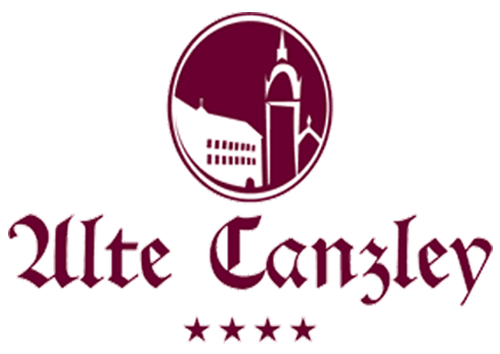History of the Hotel “Alte Canzley” in Wittenberg
A Historic Building in a Historic Town
According to historic records the first building at the site of the “Alte Canzley” was built in 1391 by Dr. Johannes Ferwer. Thus, the “Alte Canzley” is one of the oldest buildings in Wittenberg , predating the discovery of America by Columbus by more than a century.
Significant parts of the architecture from that time are preserved in the building today, including the ancient tower with a medieval spiral staircase, the walls and ceilings of the medieval dining room (today’s restaurant) and many more features.
But this is only the “modern history.” Recent archeological excavations on our property confirmed that prior to the house built in 1391 the site was part of an ancient fortress of the “Ascanians.” The centerpiece of the relics from that time is a 30 yard deep ancient stone well. When the mud at the bottom of this well was investigated, the archeologists discovered a historic record of the inhabitants of the site dating back to the 11th century. The jewelry, glass ware and other antique artifacts testify that Wittenberg – and the ancient castle well in the back of the current hotel – lay at the crossroads of old trade routes reaching from Western Europe to the Middle East.
In 1399, 8 years after the foundations of the current building were laid, the house was named “Thurmpropstei” (Tower of the Provost). Later the house was named “Canzley” (Chancellery) the residence and office of the king’s chancellors – a “10 Downing Street” of its time.
In 1521, only four years after Martin Luther had published his 95 Theses, Chancellor Justus Jonas moved into the building and acquired it in 1528. Jonas lived in the building until 1541. As a master of Latin and German he was – together with Luther and Melanchthon – one of the key figures who helped to translate the Latin scriptures of the time into the spoken language. When translating the Old Testament, Luther also consulted Jonas.
The detailed records of the “Alte Canzley” show that in 1558 Justus Jonas the Younger bought the house and renovated it for “3100 Thaler” – the medieval currency from which the modern “Dollar” derived. This renovation also included the construction of the “Wendelstein” – the 60 yard high spiral stair case – the equivalent of a modern day elevator.
Until the 18th century the building was used as a guesthouse for the kings residing in Wittenberg. Moreover, in the centuries following the publication of the 95 Theses, Wittenberg became recognized as the origin of the Protestant movement. However, the meaning of Wittenberg goes far beyond any religious meaning.


